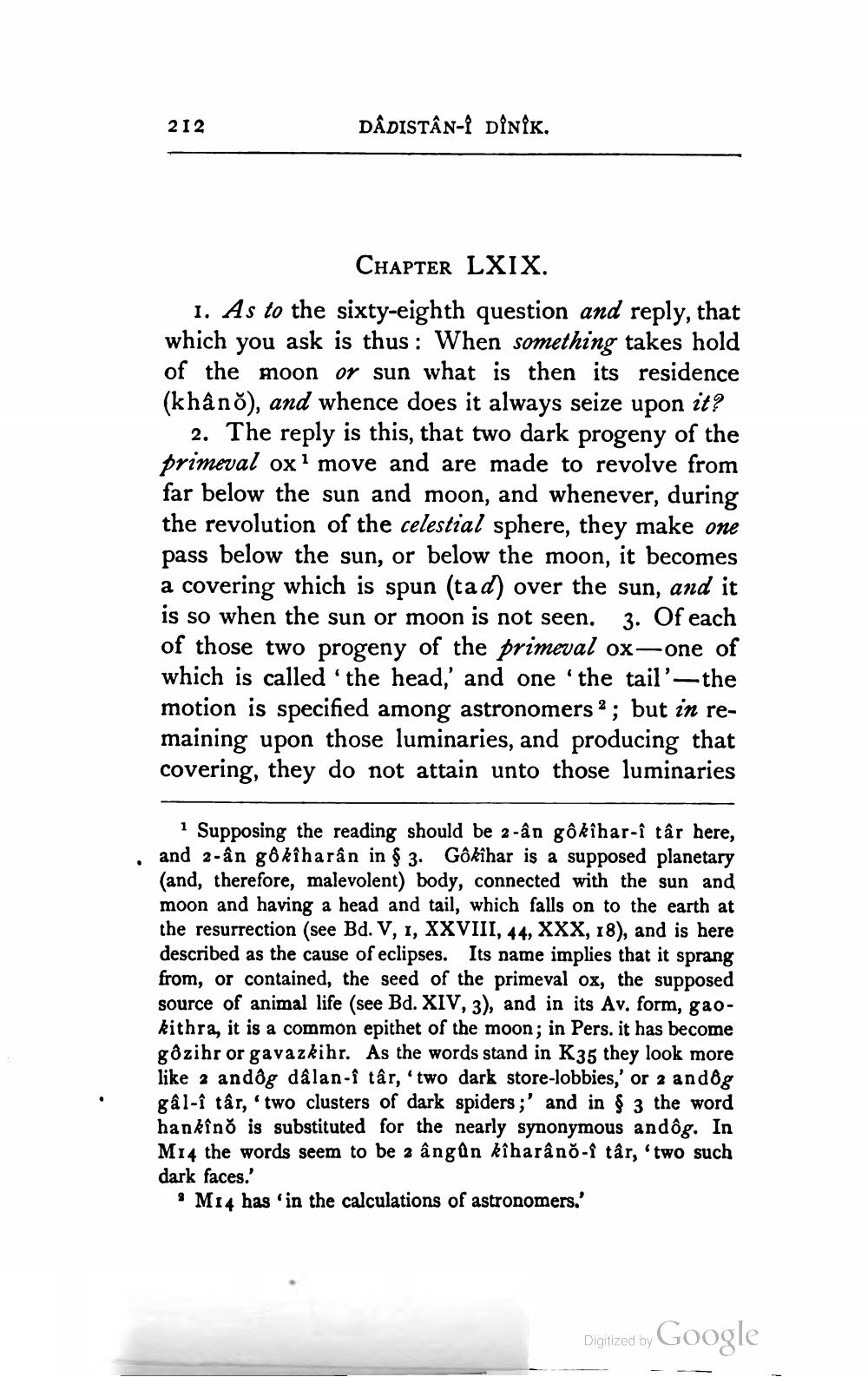________________
212
DÂDISTÂN-i dinik.
CHAPTER LXIX. 1. As to the sixty-eighth question and reply, that which you ask is thus : When something takes hold of the moon or sun what is then its residence (khâno), and whence does it always seize upon it?
2. The reply is this, that two dark progeny of the primeval ox? move and are made to revolve from far below the sun and moon, and whenever, during the revolution of the celestial sphere, they make one pass below the sun, or below the moon, it becomes a covering which is spun (tad) over the sun, and it is so when the sun or moon is not seen. 3. Of each of those two progeny of the primeval ox-one of which is called the head,' and one 'the tail'— the motion is specified among astronomers ? ; but in remaining upon those luminaries, and producing that covering, they do not attain unto those luminaries
1 Supposing the reading should be 2-ân gôkihar-î târ here, and 2-ân gâkîharân in $ 3. Gôkîhar is a supposed planetary (and, therefore, malevolent) body, connected with the sun and moon and having a head and tail, which falls on to the earth at the resurrection (see Bd. V, 1, XXVIII, 44, XXX, 18), and is here described as the cause of eclipses. Its name implies that it sprang from, or contained, the seed of the primeval ox, the supposed source of animal life (see Bd. XIV, 3), and in its Av. form, gaokithra, it is a common epithet of the moon; in Pers. it has become gÔzihr or gavazkihr. As the words stand in K35 they look more like 2 andôg dâlan-i târ, 'two dark store-lobbies,' or 2 andog gâl-i târ, two clusters of dark spiders ;' and in § 3 the word hankino is substituted for the nearly synonymous andôg. In M14 the words seem to be a ângun kiharâno-i târ, 'two such dark faces.'
* M14 has in the calculations of astronomers.'
Digitized by Google




